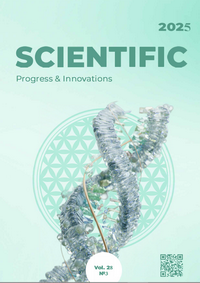The quality of milk and cheese from goats of Ukrainian and Lithuanian breeding
DOI:
https://doi.org/10.31210/spi2025.28.03.25Keywords:
goats, milk, soft cheese, physical and chemical properties, organoleptic analysis, English-Nubian breed, Alpine breed, Ukraine, LithuaniaAbstract
The results of comparative studies of milk and soft cheese qualitative parameters made from milk raw products of Ukrainian and Lithuanian selection goats were elucidated. The impact of breeds’ genetic peculiarities and rearing conditions on physical and chemical composition as well as organoleptic characteristics of milk and cheese was found. Two groups 5 animals in each of English-Nubian and Alpine breeds aged 2.5–3 years were used in the experiment. Milk indicators were studied (fat, protein, dry defatted residue, and density) as well as physical and chemical parameters of cheeses made according to the typical technological maps. The organoleptic analysis was conducted according to ISO 8586:2012 with attracting tasters. It was found that milk qualitative characteristics considerably differed depending on the area of animals’ rearing. A reliably higher fat content (5.50 % in English-Nubian and 4,74 % in Alpine breeds against 5.0 and 3.80 % in corresponding Ukrainian groups) was registered in goats of Lithuanian origin, which exceeded the control by 8.9–24.7 % (p<0.01). Protein content in the milk of Lithuanian goats also had the tendency to higher values (6.1–11.8 %). However, the goats of Ukrainian breeding demonstrated higher productivity as to the average daily milk yield (up to 2,3 kg), as well as the stable indicators of density and dry defatted residue, which shows their better adaptability to rearing conditions. According to the study results of cheeses, it was revealed that the samples of Lithuanian origin were characterized by higher nutritive value: protein content was higher by 12.6 % (p<0.001), higher fat content in dry matter – by 9.4 % (p<0.05), and caloric value reached 462 kcal/100 g against 436 kcal in the samples of Ukrainian production. The organoleptic assessment revealed considerable differences of sensory profile: the Ukrainian cheeses had more expressed sour and bitter taste (25.7 and 25.6 %, respectively), as well as softer consistency; the Lithuanian cheeses were distinguished by taste balancing and denser structure. The studies have shown that the milk and cheese from goats of different origin are characterized by specific advantages: the Ukrainian breeds are distinguished by higher milk yields and more stable composition, whereas the Lithuanian breeds provide products having higher nutritive value. The results confirm an important role of breeding and environmental factors in the formation of goats’ dairy products quality.
Downloads
Published
How to Cite
Issue
Section
License
Copyright (c) 2025 Scientific Progress & Innovations

This work is licensed under a Creative Commons Attribution 4.0 International License.

 Creative Commons Attribution 4.0 International Licens
Creative Commons Attribution 4.0 International Licens